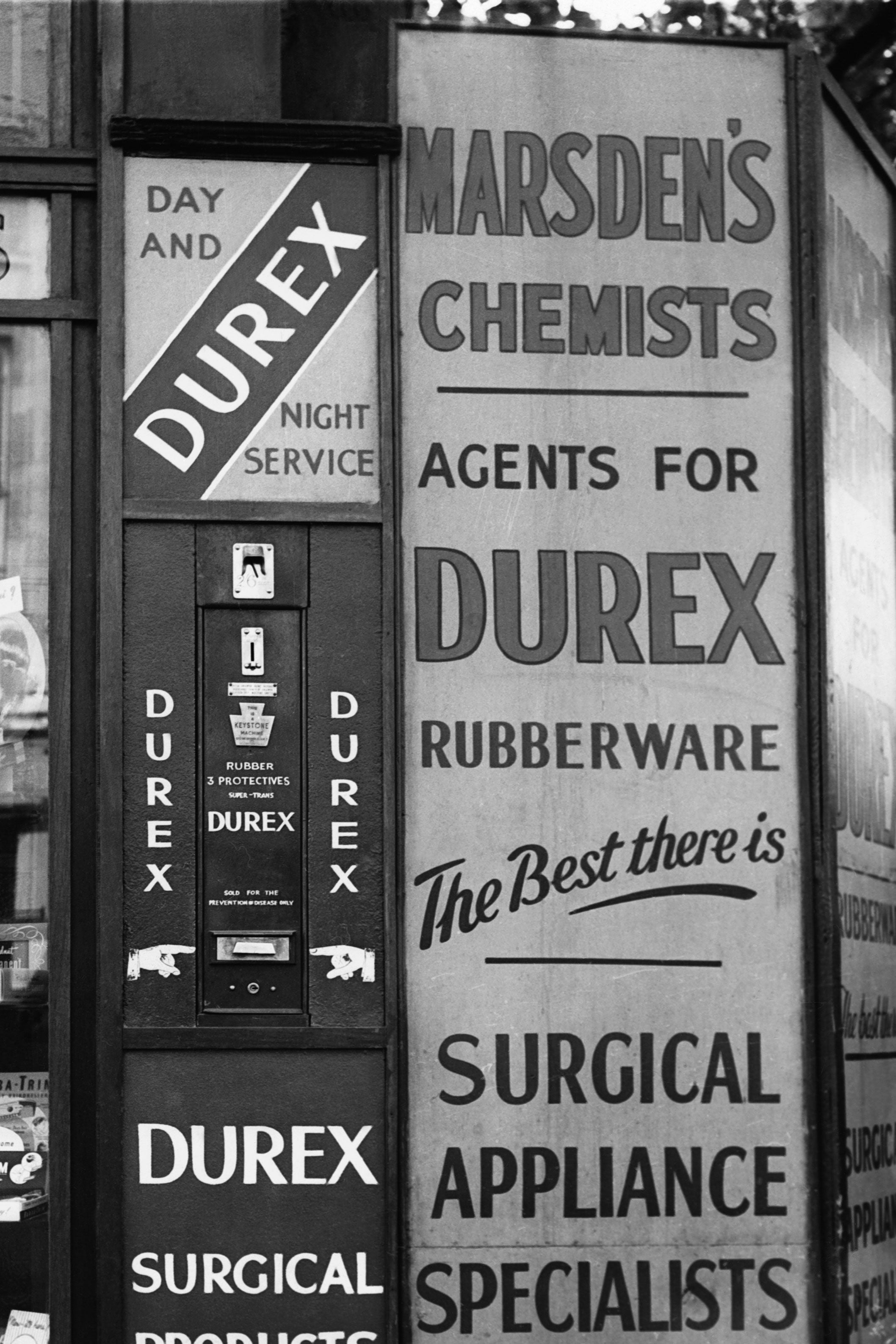100 Years of the Condom.

From rags to rubbers, the evolution of condom marketing over the last century.
Had you been around in the middle ages—when contraception came in the form of oiled animal intestines or woven mule hair—in theory, you might’ve considered abstinence. In reality, though, intercourse has always come with its complications, and we’ve spent millennia finding apt ways to do the deed while circumnavigating the consequences. Fortunately, though, we’ve made some substantial progress as a species when it comes to condoms and other contraceptives—which is to say, you no longer need to employ a bow and arrow to acquire a casual means of birth control.
Beyond the blissful invention of latex—not to mention the pill, IUDs, so on and so forth—condoms have undergone quite the evolution since their, well, conception (get it??). Rubber condoms only entered the arena in the early 19th century: Around 1916, Rubber Corp. trademarked the name Trojan and began producing packaged prophylactics geared specifically towards men.
In 1937, the FDA officially declared them a drug—which meant they were subject to formal regulations before being distributed to the public. Then, in the ‘40s, things took a turn for the best: prophylactics, which were packaged “rolled” became thinner and all-around more comfortable.
Amid the AIDS crisis, then, in 1987, Davin Wedel founded Global Protection at Tufts (yes, as an undergrad). The imperative behind the future corporation was to de-stigmatize the use of condoms, which were not exactly cool to use at the time. So, he committed himself to novelty marketing—his first batch of condom packaging featured the Tufts mascot. At the time, the FDA operated a bit differently than it does now concerning condom control: They allowed for “novelty condoms,” which were technically not cleared for sale for STI and pregnancy prevention. What do we mean by novelty? Think glow in the dark “Knight Lights” (which came with a matching tie), Candidate Condoms (“The Bush Barrier” and “The Clinton Condom”), and our personal favorite, the Prince endorsed “Purple Rain Coats.”
In 2003, ONE condoms emerged—the first to arrive in round packaging. We’re all likely familiar with these (ya know, your RA likely kept a bucket of these by the door of their dorm room). Made for individual distribution, they were ideal for health clinics, doctors' offices, and the like. Then, in 2008, a brand called Skyn developed the first-ever non-latex condom—a game-changer for the latex-allergic and sexually active.
Throughout the next following decade, Trojan released their thinnest ever condom (BareSkin), Sustain launched the first Fair Trade-certified, nitrosamine-free condom, ONE launched a custom condom sizing kit. In 2018, Maude arrived, bringing a more streamlined, appealing design to sustainable condom packaging, and further marketing their goods to women as well as men.



